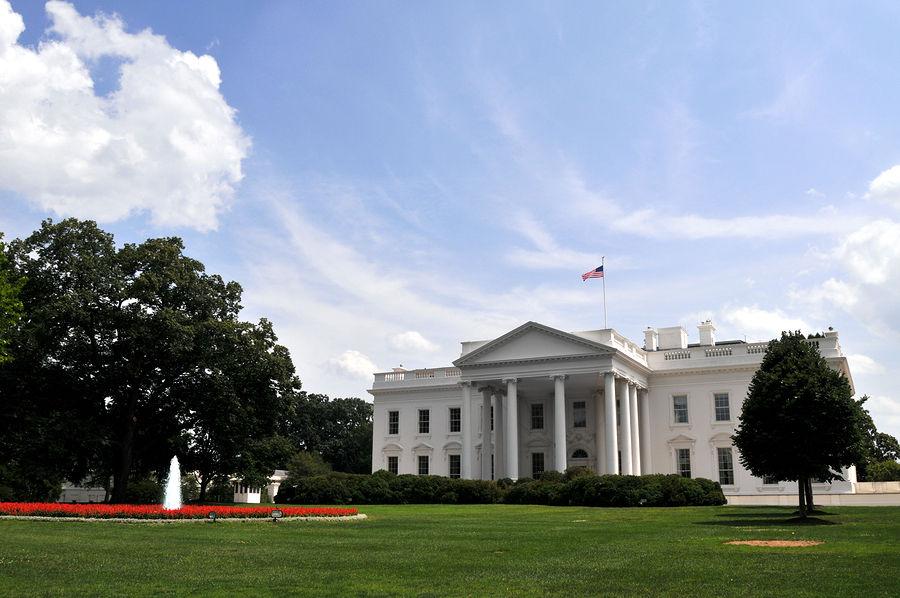Candidate Profile: Kamala Harris on Energy
President Biden ended his reelection campaign on Sunday, July 21, under mounting pressure from Democrats following his poorly received debate performance. By endorsing Harris, he has positioned her as the frontrunner to succeed him. However, there is still some degree of uncertainty looming as Democrats hurriedly work to assemble a new 2024 ticket before the party’s convention on August 19-22 in Chicago.
Harris’ stance on energy, both during her tenure as a senator and as a candidate in the 2020 Democratic presidential primary, was to the left of Biden’s, leaning more towards far-left positions that favor government control and political direction of energy production. In her 2019 platform, she outlined climate goals that surpassed those of the current administration, aiming to achieve a renewable reliant economy by 2045. Her plan proposed that new buses, heavy-duty vehicles, and vehicle fleets must be zero-emission by 2030, with all vehicles mandated to be 100 percent zero-emission by 2035.
Fracking Bans
As a candidate for president in 2020, she advocated for a ban on hydraulic fracturing. Furthermore, during her tenure as California’s attorney general, Harris filed a lawsuit against the Obama administration’s Interior Department in 2016, challenging potential fracking activities off the state’s coastline and describing the practice as a “threat to the health and well-being of California communities.”
The shale revolution has profoundly changed American energy production. Through hydraulic fracturing, precise drilling techniques, and private ownership of subsurface resources in strategic regions, the United States has emerged as a global energy leader.
According to a 2015 report by the National Bureau of Economic Research titled “Welfare and Distributional Implications of Shale Gas,” the U.S. shale boom significantly lowered natural gas prices. The report estimated an annual welfare gain of $48 billion from 2007 to 2013, a substantial figure given that retail spending on natural gas totaled around $160 billion in 2013. This economic impact represented approximately one-third of one percent of the gross domestic product, equivalent to about $150 per capita. The reduced prices of natural gas facilitated its displacement of coal in the U.S. energy mix. In 2023, carbon dioxide emissions dropped by 3 percent, continuing a consistent decline in U.S. emissions observed over the past 15 years.
The benefits of the shale boom extend to royalty payments for individuals and families, as well as substantial economic advantages for local and regional economies. For every million dollars of new oil and gas extraction, there is an associated $80,000 increase in wage income, $132,000 in royalty payments and business incomes, and the creation of 0.85 jobs within the local economy. These economic impacts are magnified threefold when considered across the broader region. According to a recent report by the American Petroleum Institute, the oil and natural gas industry supports 0.8 million jobs across all 50 states, both full-time and part-time. This workforce accounts for 5.4 percent of the nation’s total employment and contributes nearly $1.8 trillion to the U.S. economy annually.
Green New Deal
Harris was also an early supporter and original co-sponsor of the Green New Deal, a resolution initially proposed in 2019 by progressive Democrats such as Representative Alexandria Ocasio-Cortez of New York and Senator Ed Markey of Massachusetts. The Green New Deal (GND) comprises a range of policy proposals aimed at addressing what is claimed to be a climate crisis, with a central goal of achieving net zero greenhouse gas (GHG) emissions by 2050 in various iterations.
While proponents of the GND claim it aims to address energy, environmental, and climate concerns, its policies are predicted to bring no economic benefits while imposing significant economic costs. Historical data on energy consumption, economic growth, employment, income levels, and poverty suggest that the GND would have adverse effects across all of these dimensions. In particular, reducing reliance on conventional energy sources will stall economic growth and increase poverty by limiting opportunities in energy production. The estimated annual cost of implementing the GND’s electricity mandate alone is projected at $490.5 billion annually, impacting households unevenly across states. Transitioning to “clean” electricity is expected to require extensive land use and may increase greenhouse gas emissions from backup power generation. The unreliability of intermittent renewable sources like wind and solar power would jeopardize electricity grid stability and lead to widespread blackouts. Beyond energy concerns, the GND’s broader costs will be approximately $9 trillion per year, excluding costs from shifts in the transportation sector and environmental damages. The proposal to fund the GND through money creation is dismissed as likely to cause inflation and devalue currency, further straining economic stability and reducing investments in environmental protection over time.
Climate Equity
In conjunction with her support for the GND, Harris also supported several pieces of legislation that would expand the federal bureaucracy in the name of advancing “climate equity.” In 2020, Harris proposed the Climate Equity Act, which aimed to create a new independent Office of Climate and Environmental Justice Accountability.
In practice, the current administration’s approach to “equity” consisted of transferring hundreds of millions of taxpayer dollars to President Joe Biden and Vice President Kamala Harris’s own environmental justice advisors. Just days into his presidency in 2021, Biden issued an executive order to create his environmental justice advisory council. This council operates under the EPA, includes four designated federal officers from the agency, and holds authority to advise both the White House Council on Environmental Quality and an interagency council consisting of various Cabinet secretaries.
The Washington Free Beacon reviewed a database of federal grants and found that four prominent environmental justice organizations — WE ACT for Environmental Justice, the Bullard Center for Environmental & Climate Justice at Texas Southern University, the Deep South Center for Environmental Justice, and Kean University’s Center for the Urban Environment — collectively received $229 million in grants from the Environmental Protection Agency. Additionally, they were designated as partners to recipients of another $200 million in grants. Leaders from these organizations serve on the White House’s Environmental Justice Advisory Council, housed within the EPA, the agency responsible for awarding these grants. According to the White House, the council provides “independent advice and recommendations on how to address current and historic environmental injustice.” Peggy Shepard, executive director of WE ACT for Environmental Justice, chairs the council. Other council members include Robert Bullard from the Bullard Center, Beverly Wright from the Deep South Center, and Nicky Sheats from the Center for the Urban Environment.
Except for the Center for the Urban Environment, all of these organizations are linked to Mike Bloomberg’s Beyond Petrochemicals initiative, an $85 million campaign launched in 2022. They have also received substantial funding from Jeff Bezos’s Earth Fund and other progressive funding channels. Large firms run by people like Bezos and Bloomberg stand to benefit from complex environmental regulations. Regulations often either directly restrict competition, or indirectly imposes a greater burden on smaller businesses as they have fewer resources to comply with new rules. The Free Beacon’s investigation concluded that these revelations raise concerns about the oversight of the Biden-Harris administration’s allocation of significant environmental grants because of the close ties between the EPA’s environmental justice efforts and these organizations.
In addition to her Environmental Equity Act, then-Senator Harris also introduced legislation titled the Environmental Justice for All Act. This too would have seen hundreds of millions of tax-dollars go to radical foundations and nonprofits aligned with Harris’ politics. However, it goes much further by targeting American energy producers with new taxes and fees. The proceeds of these new punitive taxes would go to further grantmaking for the very organizations attempting to put American energy workers out of jobs. On top of the traditional spending spree and new taxes, this bill would create new programs seeking to enact “reparations” to communities most “impacted” by climate change. One such program proposed in the bill is to fund the creation of make-up and other cosmetic products exclusively for “women of color” all in the name of fighting climate change.
Electric Vehicle Mandates
Vice President Harris has also been a consistent supporter of the Biden administration’s unpopular EV mandates. During her 2020 presidential campaign, Harris pledged ambitious climate policies. She aimed for 50 percent of all new passenger vehicles sold to be electric vehicles (EVs) by 2030, and a complete transition to 100 percent EVs by 2035. Additionally, she supported a mandate that by 2030, all new vehicle purchases for corporate fleets, transportation networks, and heavy-duty vehicles must be electric.
Back in January 2019, months after announcing her presidential bid, Harris cosponsored the Zero-Emission Vehicles Act. Initially targeting 43 percent of car sales to be electric by 2027, the bill evolved to set a goal of 100 percent electric car sales by 2035. In contrast, the Biden administration’s current approach includes finalized standards that aim for 56 percent of new light-duty car sales to be battery-electric and 13 percent hybrid by 2032. For heavy-duty vehicles under these standards, fewer than half of trucks produced in 2032 are expected to be electric.
A recent poll conducted by the Remington Research Group, commissioned by the American Fuel & Petrochemical Manufacturers, revealed that in key states such as Arizona, Michigan, Nevada, Ohio, Pennsylvania, and Wisconsin — pivotal for determining the election outcome — 59 percent or more of likely voters oppose government bans on gas-powered cars.
Bans On Plastic
Harris has also supported bans on plastic straws and single use plastics even though these policies routinely fail to provide any sort of meaningful benefit to the environment. For example, in 2020, New Jersey enacted legislation prohibiting single-use plastic and paper bags in all stores and food service businesses, which took effect in May 2022 and was applauded by environmental groups. Despite a reduction of over 60 percent in the total number of plastic bags to 894 million, the switch to alternative bags led to a significant increase in the state’s plastic consumption, soaring nearly threefold from 53 million pounds to 151 million pounds.
Most stores in New Jersey adopted heavier, reusable shopping bags made from non-woven polypropylene, which require over 15 times more plastic and generate more than five times the greenhouse gas emissions during production per bag compared to polyethylene plastic bags. Moreover, these alternative bags are not widely recyclable and typically lack post-consumer recycled materials. Greenhouse gas emissions surged by 500 percent compared to the previous bags used in 2015, adding to consumer expenses for reusable bags at a time when economic pressures from inflation were already affecting grocery budgets.
AEA Congressional Scorecard
Senator Kamala Harris received a lifetime score of 0 percent from the American Energy Alliance’s Energy Scorecard.
2019 – 2020 votes:
2017 – 2018 votes:



